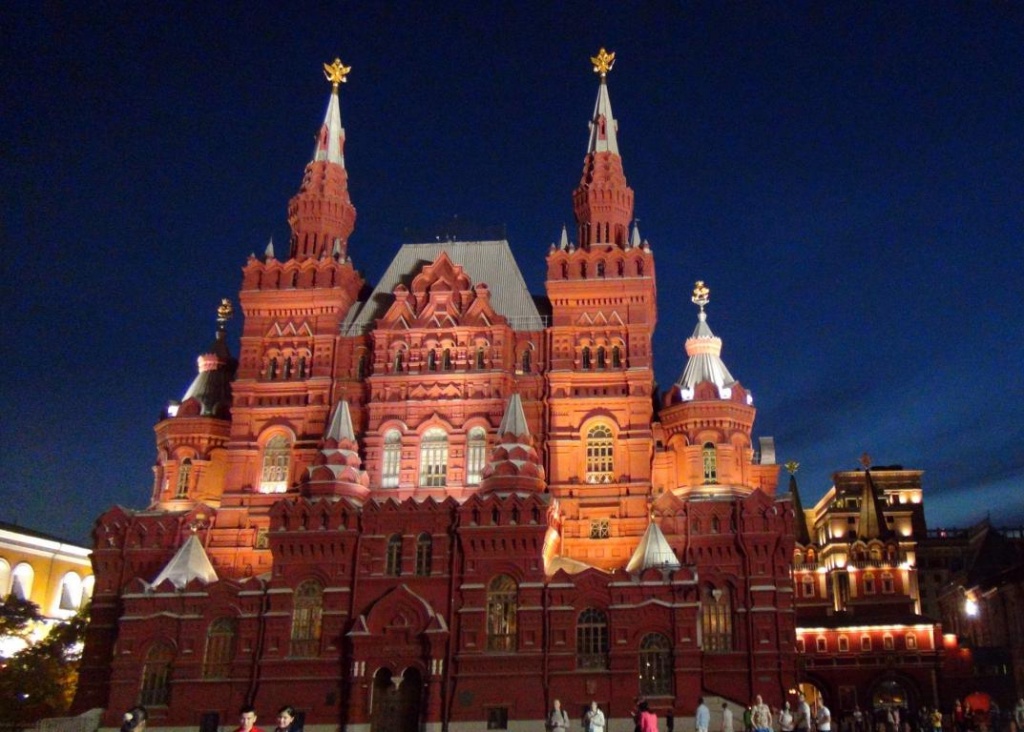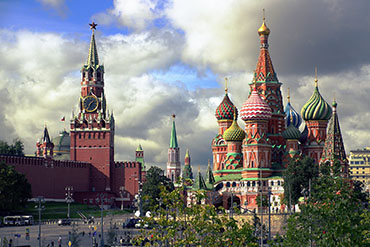It is the best known of the kremlins (Russian citadels) and includes five palaces, four cathedrals, and the enclosing Kremlin Wall with Kremlin towers. In addition within this complex is the Grand Kremlin Palace that was formerly the Tsar's Moscow residence. The complex now serves as the official residence of the President of the Russian Federation and as a museum with a lot of visitors in every year.

Moscow Kremlin Museums is a major state-run museum in Moscow Kremlin. Its roots lie in the Kremlin Armoury museum founded in 1806, the current form of the museum started in 1991.
Moscow Kremlin Museums have the following parts:
Armoury Chamber
The Armory Collection began to take shape in the fourteenth and fifteenth centuries as a private treasury of the great Moscow princes and kings. The museum’s collection includes more than four thousand exhibits of the 12th – 19th centuries: a collection of weapons, silver and gold items, items from Kremlin workshops, presents of foreign ambassadors and collection of carriages.
Diamond Fund
The Diamond Fund was founded in XVIII century. At this time the collection consisted of the jewelries of the Romanov family. On November 2, 1967 an exhibition of the Diamond Fund of the USSR was opened at the Armory. Since that time the collection started to include samples from Russian mineral deposits and the work of modern jewelers.
Dormition Cathedral
The cathedral was built in 1475-1479 by the architect Aristotle Fioravanti. It was the main cathedral of the Russian Empire until the 1917 revolution. In 1955 it was opened in the status of a museum. In the cathedral are the tombs of all the patriarchs of the first patriarchal period with the exception of Nikon and Ignatius.
Cathedral of the Archangel
The Archangel Cathedral was built in 1505-1508 by the Italian architect Aleviz Novy on the place of the old cathedral of the XIV century. There are 54 burials in the cathedral including the Grand Dukes beginning with Ivan Kalita and ending with Emperor Peter II. Nearby there are the burial of Dmitry Donskoy, the relics of Mikhail Chernigov, Tsarevich Dmitry Uglichsky, the Monk Euphrosyne of Moscow.
Cathedral of the Annunciation
The cathedral was built in 1489 under the guidance of the Pskov masters Krivtsov and Myshkin on the place of the 13th century house church. The church was rebuilt under Ivan the Terrible in the 1560s for the last time. In 1836 a chapel was built in the southern part of the church in the name of St. Nicholas the Miracle Worker and six years later the cathedral was connected to the new building of the Grand Kremlin Palace . The cathedral acquired the status of a museum in 1955. It presents the oldest high iconostasis in Russia that was made according to the drawings of Nikolai Sultanov in the 19th century.
Residence of Patriarchs and Church of the Twelve Apostles
The complex of buildings of the Patriarchal Chambers was built in 1635-1656 by artisans Antip Konstantinov and Bazhen Ogurtsov. The initiator of the construction was Patriarch Nikon. After the abolition of the patriarchate in 1721 in the chambers was located the Moscow Synodal Office. The opening of the patriarchal chambers as a museum took place in 1961. The museum presents personal items of the patriarchs and members of the royal family, icons, jewelry and dishes.
Church of the Deposition of the Robe
The church was built in 1484-1485 as a pseudonym for the Annunciation Cathedral of the Moscow Kremlin. The revival took place in memory of the successful battle of the Moscow forces against Mazovshi. Until the mid-17th century the church served as the home church of the Moscow metropolitans and patriarchs. The church acquired museum status after the restoration of the architect L. A. Petrov in the 1950s. It presents objects of carved wooden sculptures of the 15th - 19th centuries brought from Moscow, Novgorod, Rostov, the monasteries of the Russian North. The museum also presents samples of church art.
Ivan the Great Bell Tower
The bell tower was built in 1505-1508 according to the project of architect Bon Fryazin. The Kremlin History Museum was opened in 2008. The exhibition hall is located on the ground floor, and the Museum of the History of the Moscow Kremlin Architectural Ensemble is located in the upper rooms. The ensemble includes a bell tower pillar, a belfry and an Filaret annex.






